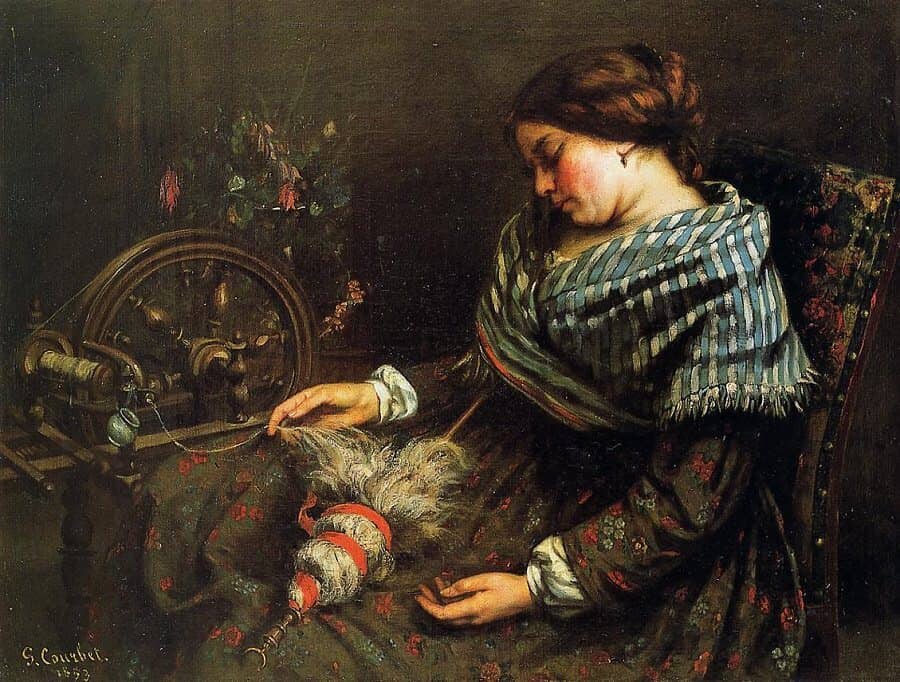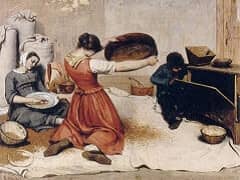The Sleeping Spinner by Gustave Courbet

Courbet returns here to a theme first explored in The Hammock of 1844, that of the sleeping woman. The differences in context and style mark the artist's painterly development and the increasing specificity of his Realist project. Since the After Dinner at Ornans, he had been embarked on a series of paintings that constituted a kind of witnessing of the realities of the life around him: the work, the leisure, the rituals of a provincial community in which, as elsewhere in France, a former peasant class was becoming self-aware and laying a claim to political, social, and cultural attention.
As a member of that class himself, refusing to disavow and rise above it as so many had done, he took his subjects from the life he knew, for it was by means of the activities of these actual persons that Courbet could express the meaning of his witness; his purpose was not to record individuals per se (though he did that in portraits). Thus, the often debated question of whether the model was one of Courbet's three sisters or another local woman is of little significance compared to the fact that the figure is defined by her physical type, her setting and clothing, and the activity that has been interrupted by sleep. She is depicted as a solid, cushiony sort of woman, strong and heavyset (tropes for "peasant"), but dressed in a comfortable and attractive middle class way and seated on an upholstered chair. The fabrics of the dress, shawl, and chair, together with the spinning wheel and its accoutrements, are painted with the kind of sensual energy that almost always characterized Courbet's painting of still life. The lively treatment of the hairlike raw wool on the distaff and its placement on the figure's lap lends some credence to specifically sexual interpretations, but these are secondary to the primary sexual fact that we are in the immediate presence of the woman's sleep and thus implicated in her private unconscious being. Toussaint has called attention to the remarkable quality of the hands, delicate yet heavy in the relaxation of sleep - a motif seen again in that great image of female somnolence, The Young Ladies on the Banks of the Seine. Like the other paintings of this period, with their focus on daily life, The Sleeping Spinner has been related to Dutch painting, specifically to the tradition of moralizing paintings of women by Johannes Vermeer; but Courbet was not attracted to moralizing either by temperament or in relation to his overall project, that of giving imaginative reality to his own people. On the other hand, an awareness of the craft of hand spinning as being on the verge of extinction could very well have been in his mind in selecting this theme.















